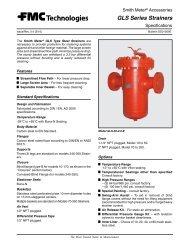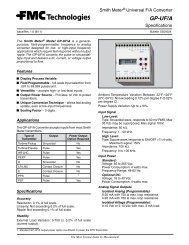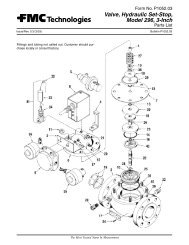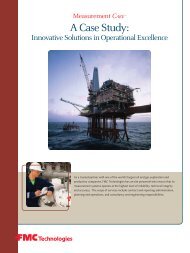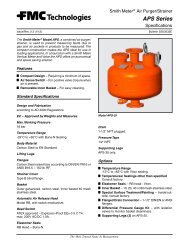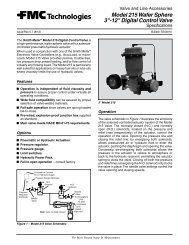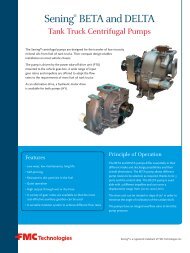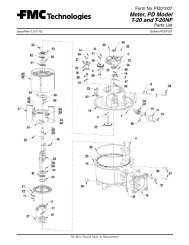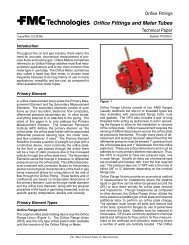EMIS Interface Description - Measurement Solutions
EMIS Interface Description - Measurement Solutions
EMIS Interface Description - Measurement Solutions
Create successful ePaper yourself
Turn your PDF publications into a flip-book with our unique Google optimized e-Paper software.
Sening®<br />
Innovative Tank Truck Systems<br />
3.3.3 Variable values<br />
Specification<br />
Euro <strong>Interface</strong> <strong>EMIS</strong><br />
<strong>Interface</strong> <strong>Description</strong><br />
Values, which can be accessed in a number of ways, are assigned to the variables.(see access<br />
rights 3.4.2 / page 16).<br />
All variables are converted into character strings before transmission. If character strings contain<br />
commas, semicolons or other reserved characters, they must be enclosed within quotation marks.<br />
Otherwise the quotation marks are optional.<br />
Quotation marks are not permitted at all within values assigned to variables.<br />
The following reserved characters are defined:<br />
Character Use<br />
, Comma: separates OpCode from variable name and divides hierarchical variable<br />
names<br />
; Semicolon: separates elements in a list of identifications (only for identifications<br />
within a group)<br />
= Separates variable name from its value<br />
”” Quotation marks enclose the variable value.<br />
Optional, if no reserved characters occur within the character string.<br />
() Brackets enclose the index in field structures, i.e. if subsidiary groups are present<br />
more than once (e.g. COMP(n) ).<br />
• The index counts from 0 upwards<br />
• Stating index (0) is optional. In other words, COMP and COMP(0) have the same<br />
meaning<br />
ATTENTION<br />
None of the characters mentioned above can be used in the value being<br />
assigned to a variable unless the character string is enclosed within quotation<br />
marks ("...").<br />
Variable Formats:<br />
• The format of HWVersion and SWVersion is "xx.xx" + optionally up to 5 additional characters.<br />
• Dates are always represented in the form "dd:mm:yyyy". Shortening the year number (yy) is<br />
not permitted (to handle the millennium properly).<br />
• Times are to be displayed in the form "hh:mm[:ss]". There is no provision for a resolution finer<br />
than seconds. Display of the seconds is optional (hh:mm).<br />
• The variable LastError has the format "nnnn:Text", and has a maximum length of 50<br />
characters.<br />
• Special rules are to be observed for the transfer of QAS event lists. (see chapter 0 / page 19)<br />
• The maximum string lengths of the variable values are determined in the tables under “Length“<br />
chapter 4 Variablendefinition / page 25.<br />
MNF19002EUS / DOK-411E Rev. 2.00 / MB / jp / Juli 2008 13<br />
1<br />
2<br />
3<br />
4<br />
5<br />
6<br />
7<br />
8<br />
9<br />
A<br />
Implementation



